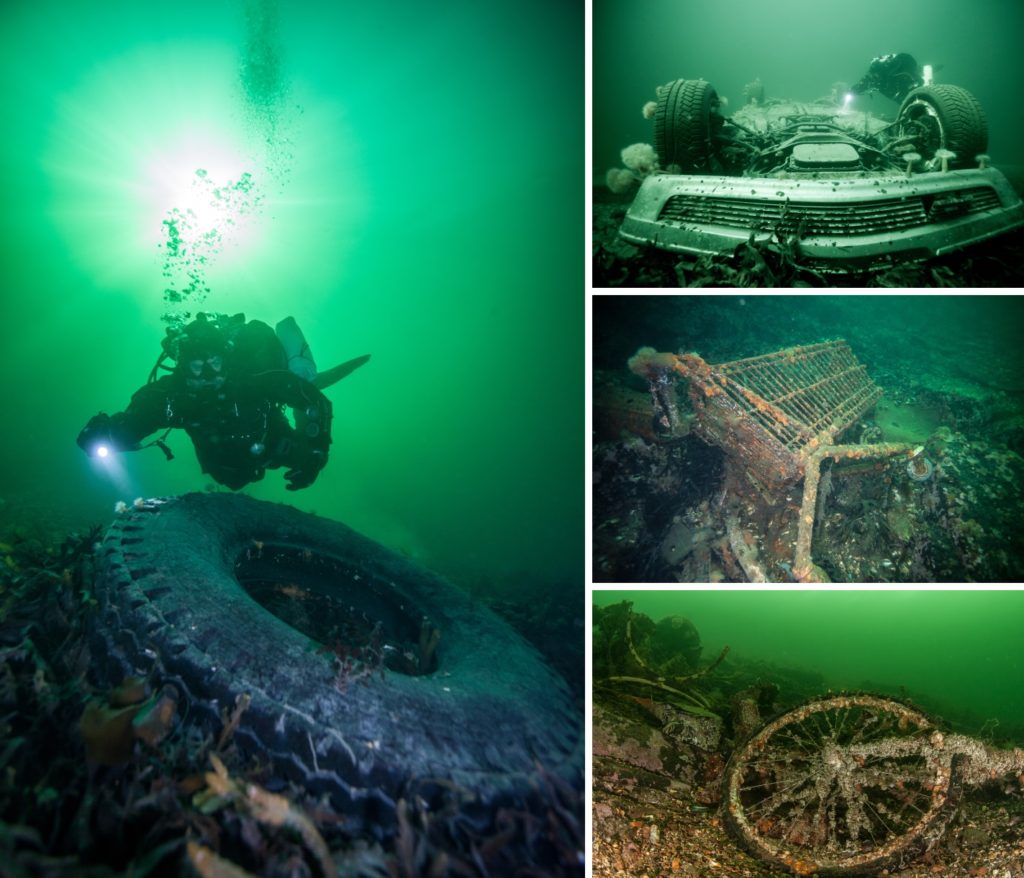
Lobster reserves in Norway
- Numbers of reserves are growing
- Could give a growth in population in about 250 % in only four years
- Marine Protected Areas seems to be the most efficient way to increase the polulation
- Large shallow areas (max 30 m depth) with lots of hides and some current are the most suitable areas to protect
- Even small areas seem efficient in management of populations
- Development of new reserves seems generally supported among population, fishermen and authorities.
What happened to the lobster?
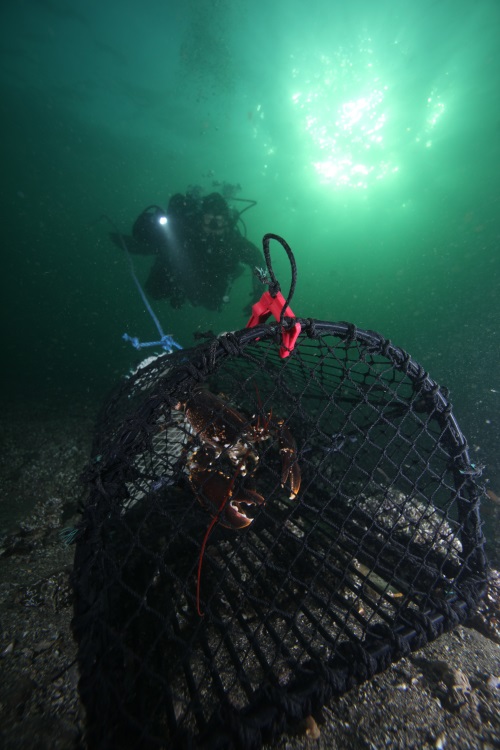
Figure 1. Legally placed lobster craw, Nesodden Norway
In Norwaythere has been a long tradition of people to catch their own seafood. This works quite well at the most part of our coastline where there are few people and lots of space, but around our capital, Oslo the pressure at the resources in the sea has become quite high.
Until about 2010 divers reported to see up to twenty lobsters per dive (similar to my own logbook) but after 2010 there were a few television programs and articles in the newspaper presenting very good fishing of lobster nearby Oslo. With retail price at fishing of lobsters at about €50 and a price per lobster craw of about €10 people massively begun fishing for lobster. At the first day of the season in 2014 port authorities reported more than 1100 craws in an area less than four square kilometers. In average it is said that unprofessional fishing is responsible of 80 – 85 % of the total catch (source www.imr.no).
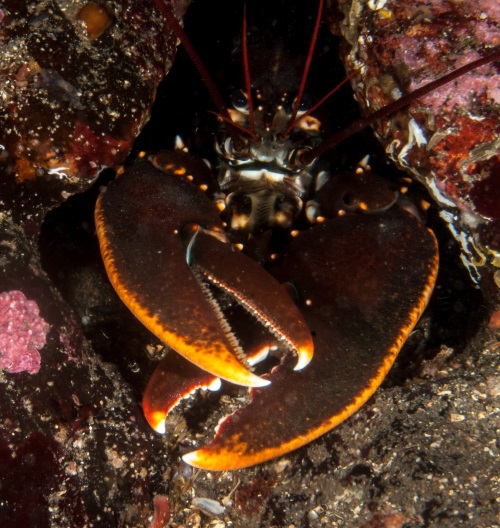
Figure 2. A lobster in its natural hide
The massive private catch seemed quit fast to remove a major part of the population. Only a few small species were left.
The same intensive, unprofessional fishing also gave us a large amount of ghost nets catching also outside fishing season. According to the Norwegian institute of Marine Research, IMR 10 – 15 % of the equipment is lost evety year.
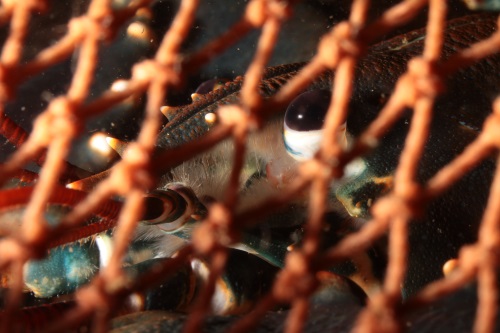
Figure 3. Lobster caught in a craw
Local engagement
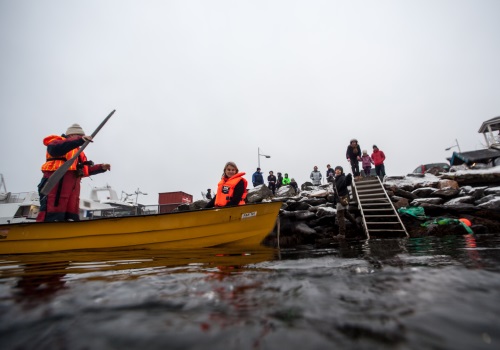
Figure 4. The major of Nesodden, Nina Sandberg is helping in the establishment of the reserve.
During the same time, local divers had started changing attitude. The old school divers used to go diving with the purpose of catching fresh food, but younger divers inspired by project baseline, WWF, Mission blue etc were taking over and the rule of game was changing. All over Norway, local groups started cleaning the coastline for trash and ghost nets.
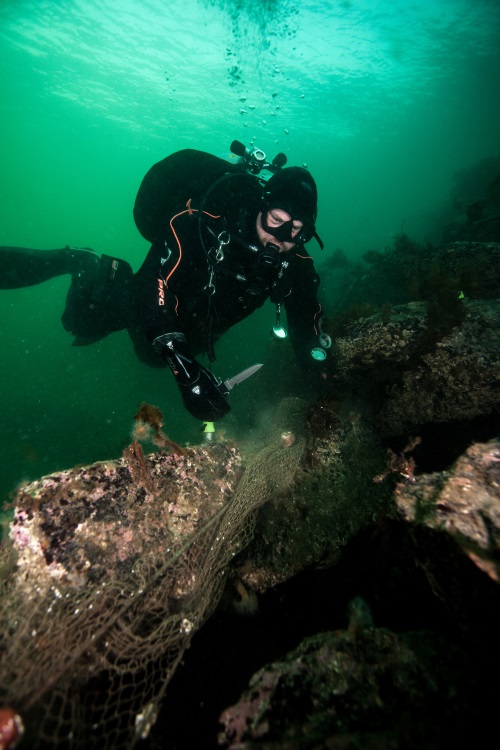
Figure 5. Removal of a ghost net in Nesodden. This rocky area is full of hides and perfect for the lobster
In 2014 the directorate of fisheries asked the Norwegian municipalities with coastline to suggest protected areas for lobsters. Test areas had shown 250 % increased population in only four years. This inspired two groups of divers located near Oslo, Marinreparatørene (the marine repairers) and”Foreningenhummerhuset” (The lobster shelter society) to start evaluating protection areas around Nesodden.
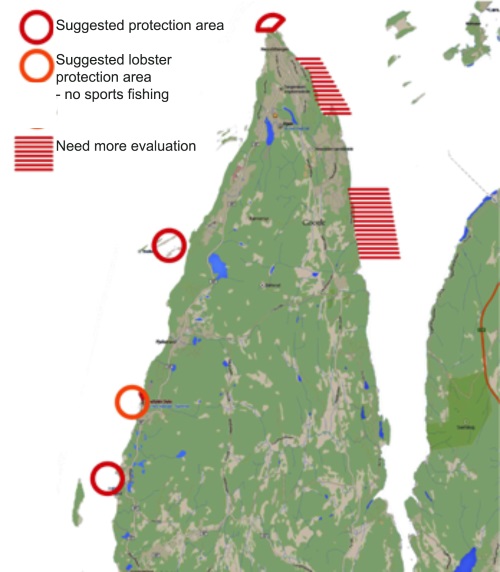
Figure 6. Suggested plan for lobster reserve, Nesodden Norway
The areas were selected after the following criteria’s suggested by the institute of marine research:
The area has to be easy to monitor to avoid illegal fishing.
The area should have large shallow oarts out from the coastline. European lobsters prefer shallow areas in the mating season.
There should be enough shelters.
The current should make sure the juveile lobsters were moved to other areas of the fjord to spread the effect of the protection area.
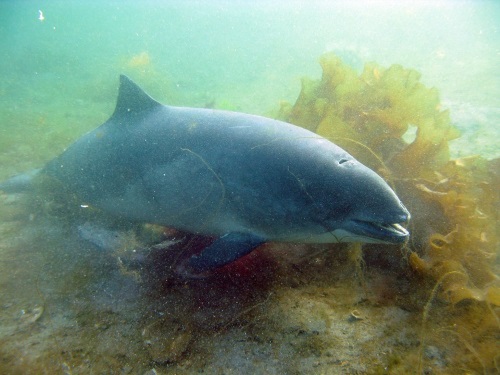
Figure 7. A porpoise who died after getting stuck in lost fishing equipment. Photo: Kjetil Astrup
After some work, the Major of Nesodden gave a mandatory to the group ”marinreparatørene” to evaluate the northernmost area as a lobster reserve.
Implementation
Funding
During the later years banks and insurance companies has started using some of their profit in sustainability funds. Well planned environmental work will normally score high in the competition of money.
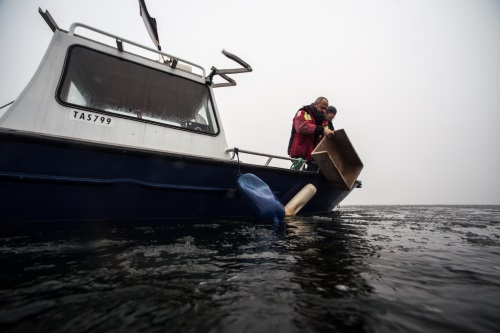
Figure 8. Lars from “Marinreparatørene” and Anne from the local diveshop are putting out a shelter for the lobsters
In this case we have three stakeholders receiving money from the same foundation – “Sparebankstiftelsen DNB” – which is funded by the profit of the largest bank in Norway.
The stakeholders were Marinereparatørene who got money for a boat and some equipment, Oslo Marine Art Park for making artificial shelters for the lobsters and Norwegian Diving Society for removal of lost craws.
Engagethepeople
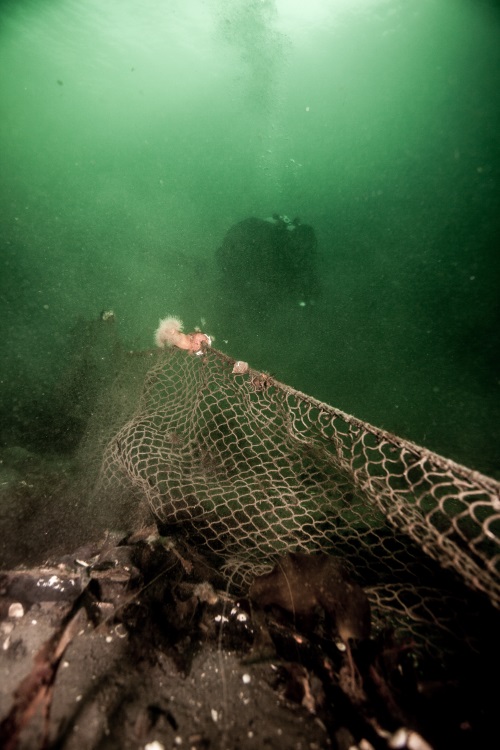
Figure 9. Lars from Marinreparatørene removing a ghost net, Nesodden, Norway
To make a lobster reserve it is important to clean for ghost nets, fishing lines etc. At the same time it is also important to engage the politicians in the work to get the right descisions at the right time.
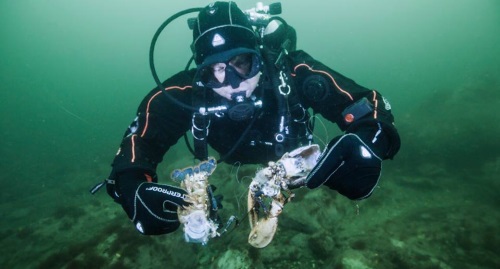
Figure 10. Lobsters who had died after getting stuck in fishing equipment.
Photo: Kjetil Astrup
The money the Norwegian Diving Sosciety had got for cleaning up lost craws seemed to be ideal for engaging diving clubs. From 2016,the deal was that for every lost craw, the diving club would get 400 NOK (about $50) for each craw, ghost net or other kinds of lost traps they removed from the sea. For some diving club this became a major income.
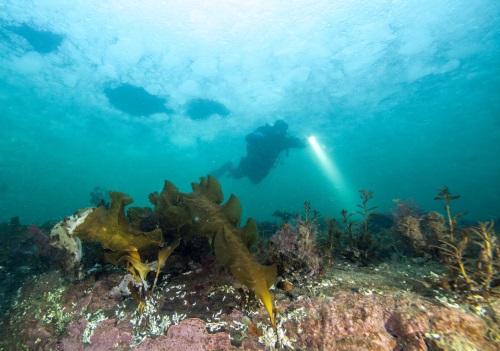
Figure 11. The suggested lobster protection area after several rounds of cleaning
The local fishermen were assumed to be a bit more tricky. A deal between marinrepratørene and the local fishermen of returing their lost equipent made the ssupport easy – a win win situation.
Facilitating the area
To optimize the reproduction of lobsters in the area, Marine Art Park – Oslo has obtained hundreds of lobster houses. The idea is to increase the amount of shelters to give space for more lobsters. The effect for this particular area is not known yet, but it has been very successful at other test areas in the fjord of Oslo. The area will be controlled to see if theese houses could be used as a tool in conservation.
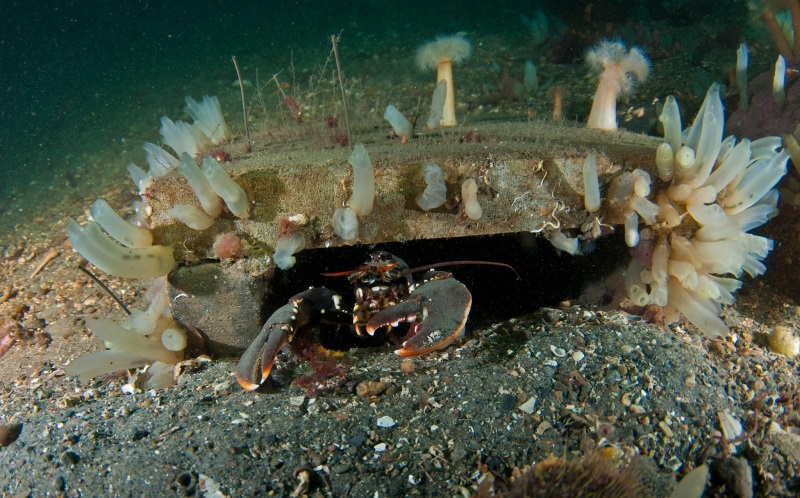
Figure 12. A ”Lobster house” placed at the bottom.
Photo: Sondre Ski
In autumn 2016, the three municipalities, Nesodden, Oslo and Bærum signed an application of a lobster protection area which means we next year will have four square kilometers protected area outside Oslo without craws, nets or other kind of traps.
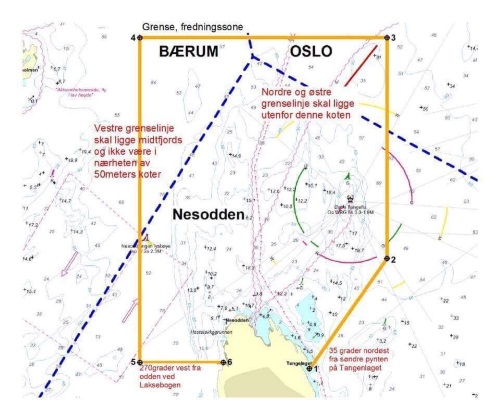
Figure 13. The suggested lobster protection area
Tips for development of small local Marine Protected Areas
- Hang up with the local dive club and ask them to adopt the area. They are cheap and efficient in removal of ghost nets etc. They will also often have members who can take photos for the local newspaper etc
- Work with the local politicians and get them on your side. Praise the work of your helpers in public
- Hang up with the local fishermen and get them on your side too. Discussing increased catch outside the area will often help
- Check out the best habitat for your species. Breeding or feeding grounds will often be the best. Make sure the circumstances are good for spreading juvenile species.
- Make sure the area is easy to monitor so you could avoid illegal fishing
WORD and PICTURE by Rune Edvin Haldorsen
